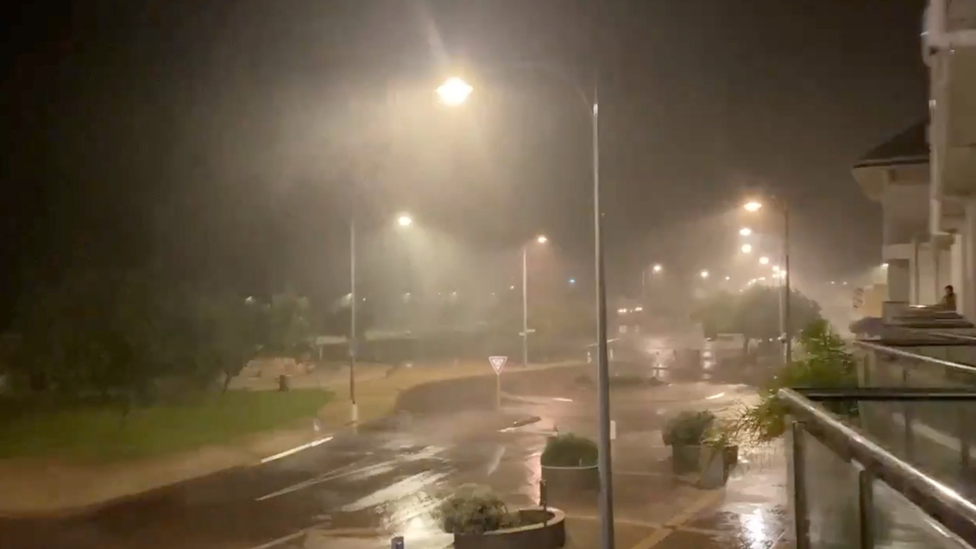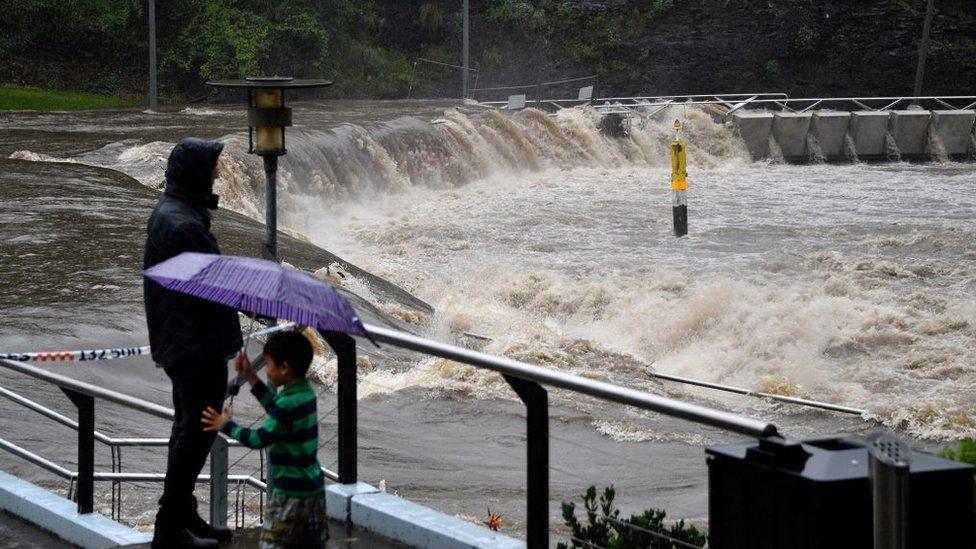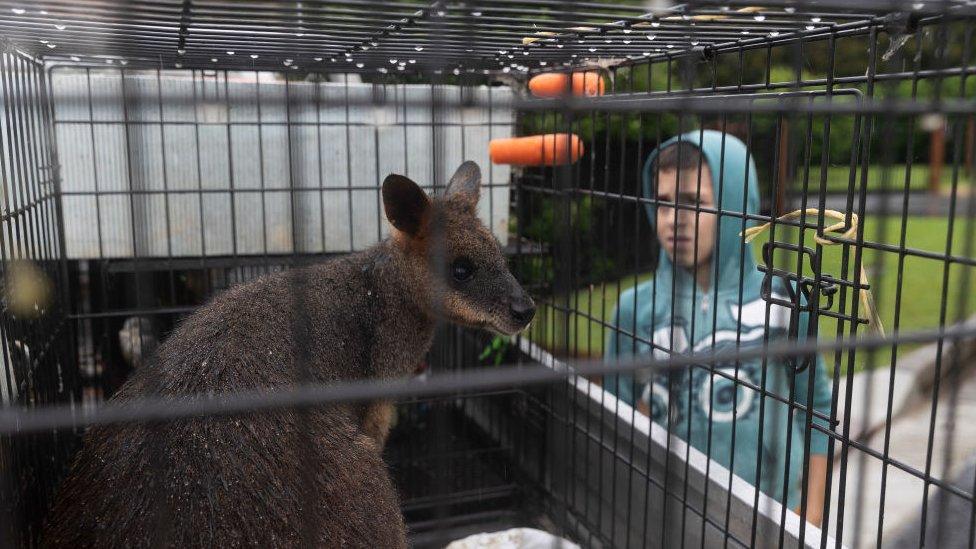Cyclone Seroja: Storm leaves trail of damage in Western Australia
- Published
Watch the fast-moving cyclone lash Western Australia
Tropical cyclone Seroja has ripped across a 1,000km (621-mile) stretch of Western Australia, leaving a trail of damage.
The category three storm made landfall near the town of Kalbarri on Sunday with gusts of up to 170km/h (105mph).
The storm was later downgraded to a tropical low, though strong winds continue to move south-east.
Residents reported smashed houses, fallen trees and downed power lines.
Kalbarri resident Debbie Major said the storm, which hit the resort town around 19:00 local time (11:00 GMT), raged through the night and was "absolutely terrifying".
"You just thought, this is it. I would have thought that when we opened the door, that there would be nothing around us except that roof," she told the Australian Broadcasting Corporation.
"We are a small town. Half of it has been flattened."

Weather authorities said Cyclone Seroja had maintained "uncommon" pace and strength throughout Sunday night, as it moved from Kalbarri and Geraldton on the coast, and inland across the state's Wheat Belt.
Emergency services said about 70% of structures in Kalbarri, which is home to about 1,500 people, were damaged by the cyclone. Several towns in the state's south-east remain under "red alert" on Monday, meaning residents were advised to take shelter, and thousands of homes were left without power.
One Kalbarri resident told the West Australian newspaper that he was forced to hide in a pantry with his pregnant wife and their dog., external
"I heard a few windows smash and some loud bangs. I went upstairs to check and felt that it was raining. I didn't look up but I am guessing I have lost some of my roof," Jason Regan said.

Authorities have warned the heavy rain may cause flooding
Darius Winterfield, a reporter for Channel 9 news in Kalbarri, lost the roof to his balcony and said the storm would be "devastating for many come first light".
Emergency services received 175 calls for help on Monday, a Department of Fire and Emergency Services spokeswoman told the BBC.
Government emergency funding is being offered to affected residents.
Allow X content?
This article contains content provided by X. We ask for your permission before anything is loaded, as they may be using cookies and other technologies. You may want to read X’s cookie policy, external and privacy policy, external before accepting. To view this content choose ‘accept and continue’.

Before the storm hit, state Premier Mark McGowan warned that the cyclone was "like nothing we have seen before in decades". The Bureau of Meteorology said it was the first cyclone to hit some affected areas since 1956.
Last month, areas of eastern Australia were evacuated as rivers and dams overflowed in the worst floods in decades, with around 18,000 people displaced.

Australia braces for cyclone Seroja
Related topics
- Published22 March 2021

- Published22 March 2021
